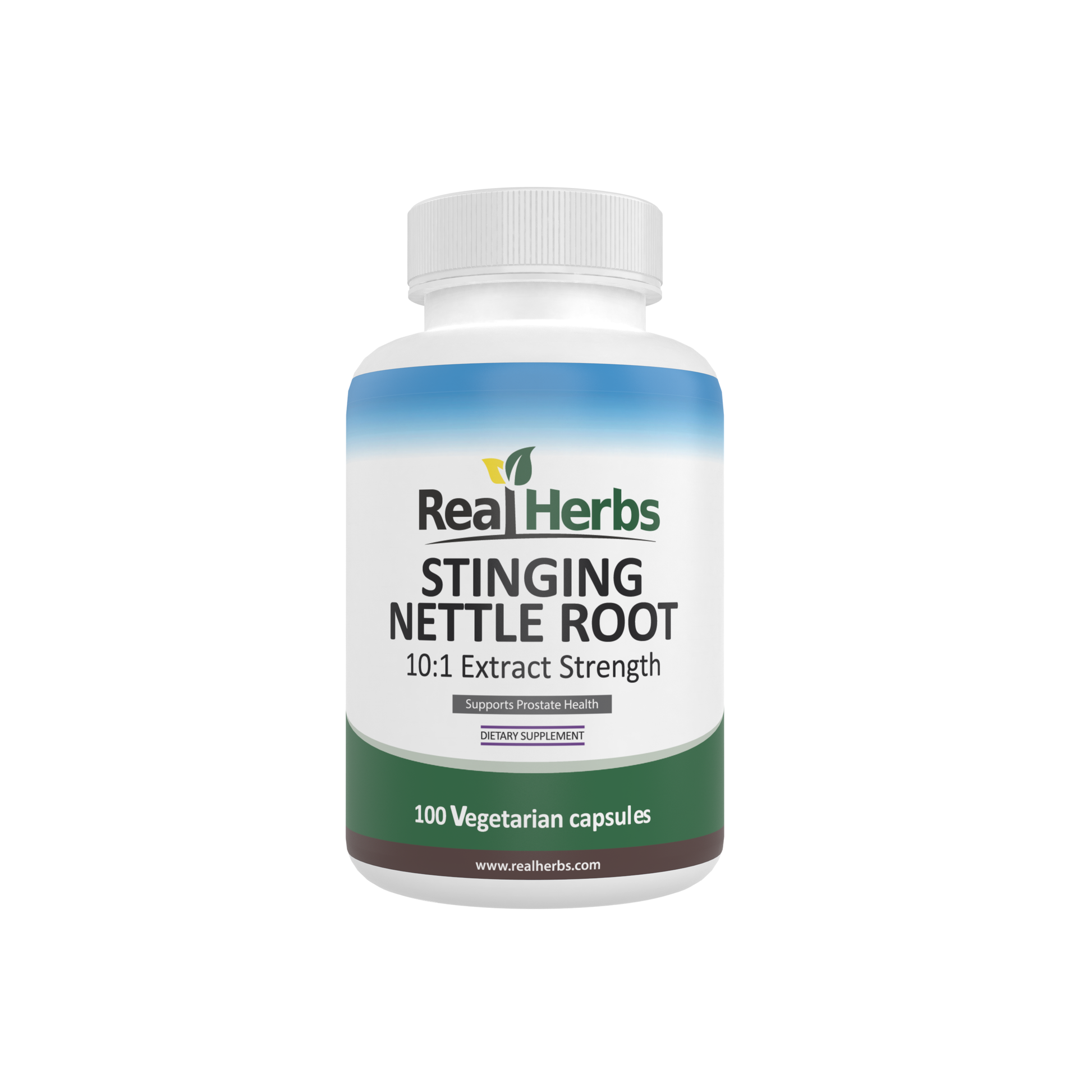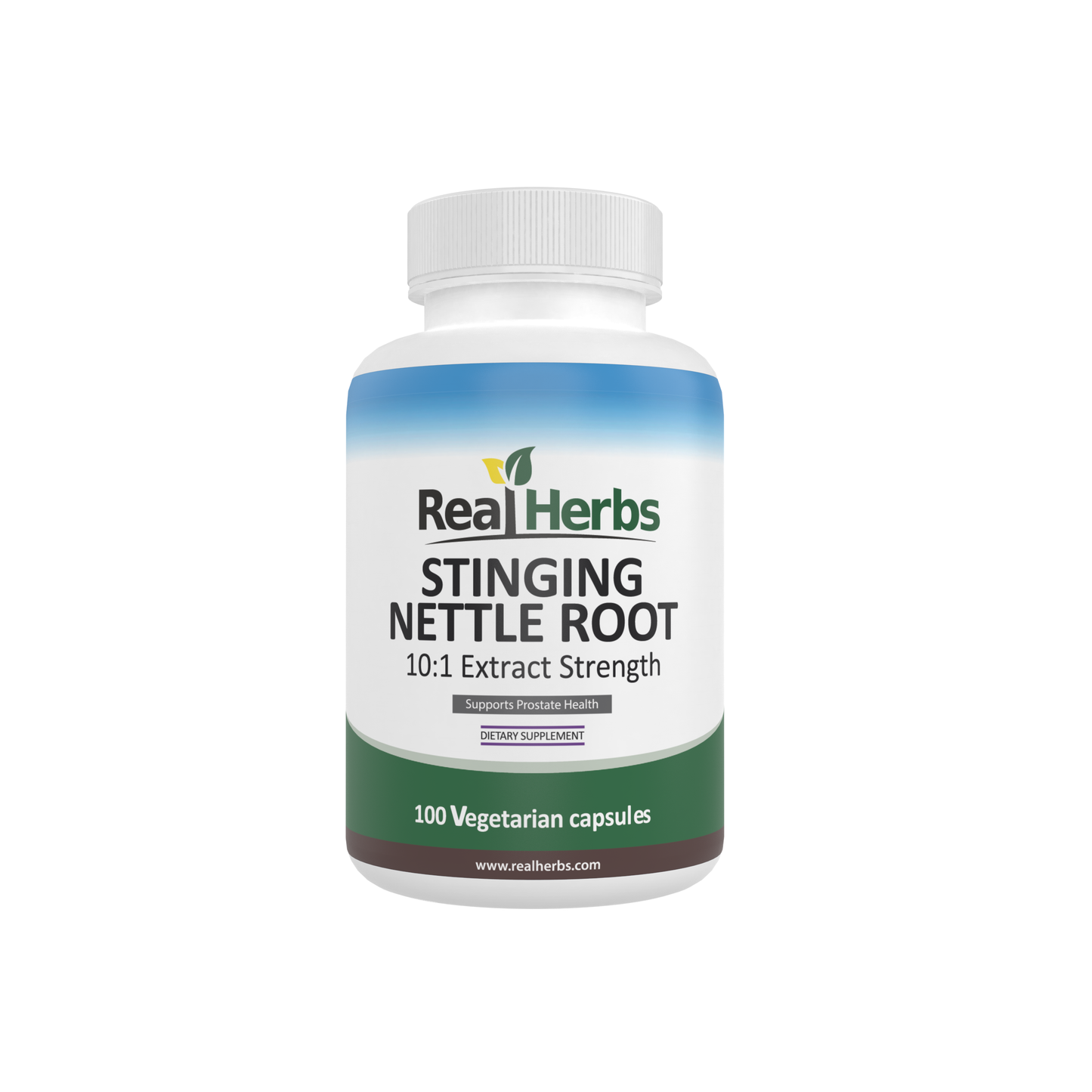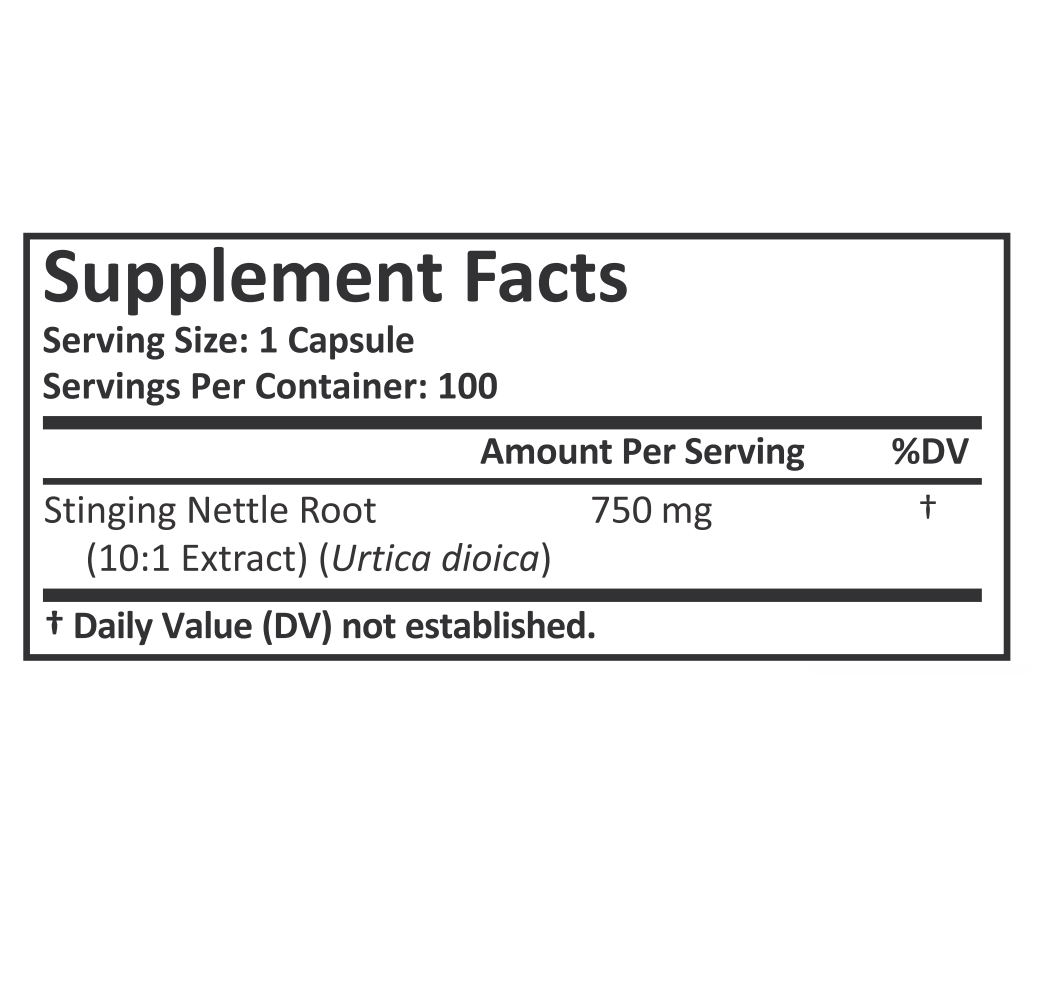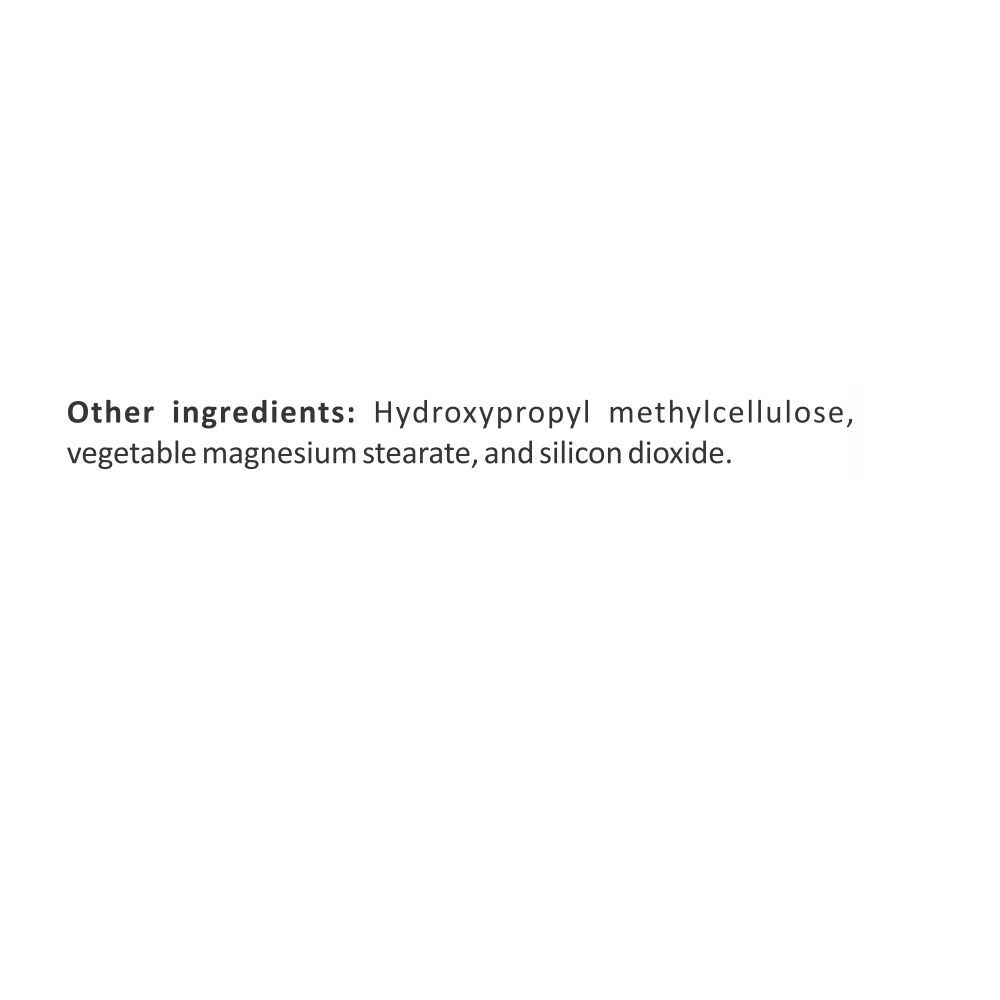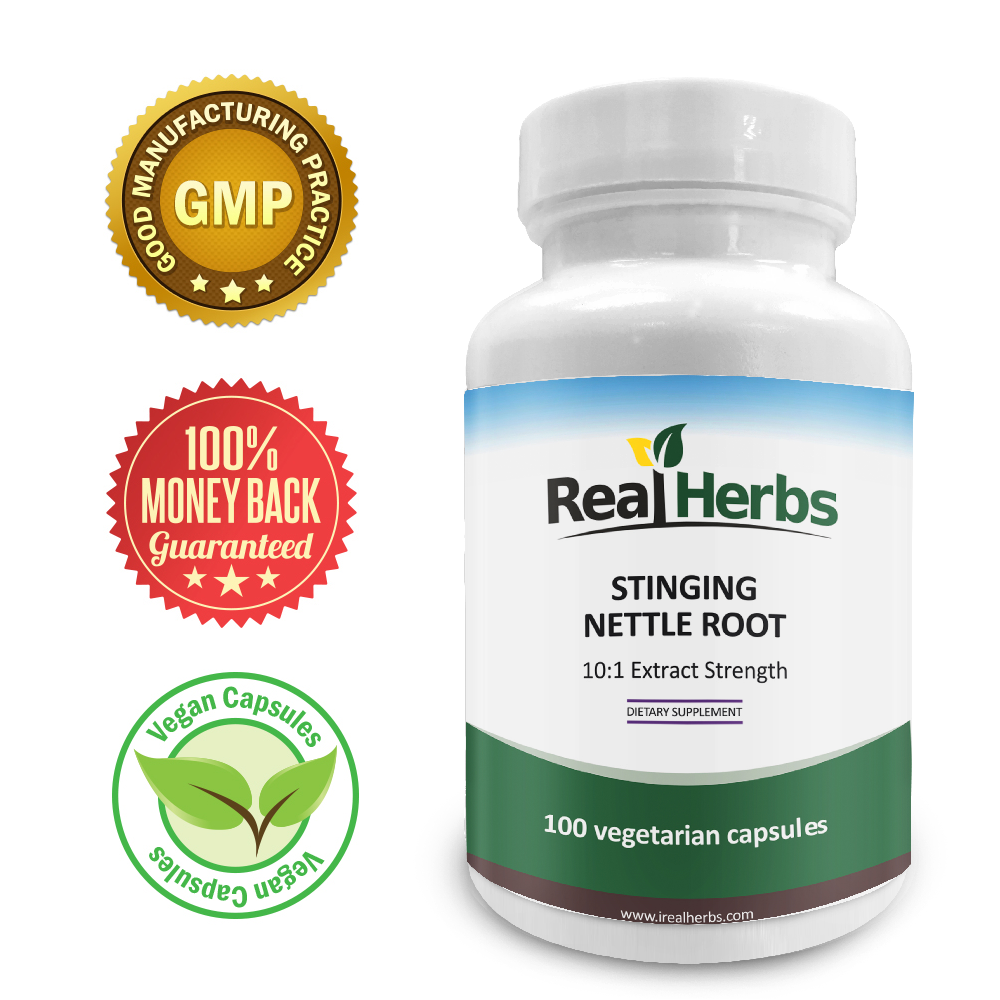Introduction
Stinging nettle (Urtica dioica) is a versatile and resilient plant that has been utilized for centuries in various cultures for its medicinal properties and nutritional benefits. Among its numerous parts, the stinging nettle root has gained attention for its potential health advantages. In this article, we will explore the health benefits of stinging nettle root, delve into sustainable harvesting practices, and discuss the ethical considerations surrounding its use.
Health Benefits of Stinging Nettle Root
Stinging nettle root has become a focal point in the world of herbal medicine and natural remedies due to its array of potential health benefits. Scientific research supports its anti-inflammatory and antioxidant properties, making it a promising candidate for various health applications. From prostate health to allergy relief, the stinging nettle root has a diverse range of positive impacts on the human body.
The root has been traditionally used to address conditions such as arthritis, benign prostatic hyperplasia (BPH), and seasonal allergies. As we explore these benefits, it's crucial to also understand the significance of sustainable harvesting practices to ensure the longevity of this valuable plant.
Sustainable Harvesting Practices
Preserving the delicate balance of nature is paramount when it comes to harvesting stinging nettle root. Sustainable practices not only safeguard the plant's existence but also contribute to the overall health of ecosystems. To engage in responsible harvesting, one must first comprehend the life cycle of the stinging nettle.
Stinging nettle is a perennial plant that often grows in rich, moist soil. Its distinctive serrated leaves and fine hairs, which deliver a stinging sensation upon contact, make it easily identifiable. Harvesting the root should be done with care to avoid harming the plant and to allow it to regenerate.
Ethical wildcrafting, a practice rooted in respect for nature, involves only taking what is necessary and ensuring minimal impact on the environment. Alternatively, cultivating stinging nettle in a controlled manner provides a sustainable supply while protecting natural populations. By adhering to these principles, we can enjoy the benefits of stinging nettle root without compromising its future availability.
Identifying Stinging Nettle
Before delving into the various applications and preparations of stinging nettle root, it's essential to know how to identify this plant in the wild. Proper identification ensures a sustainable harvest and prevents the accidental harvesting of unrelated, potentially harmful species.
Characteristics of Stinging Nettle:
-
Leaves: Stinging nettle leaves are opposite each other along the stem and have serrated edges. The leaves are heart-shaped and covered with fine hairs that release a stinging sensation upon contact.
-
Stem: The stem is typically square and covered with small, brittle hairs.
-
Height: Stinging nettle can grow to be quite tall, often reaching heights of three to seven feet.
-
Clusters: The plant often grows in clusters, forming dense patches.
-
Habitat: Stinging nettle prefers nutrient-rich soil, often found along riverbanks, in meadows, or near forests.
Identifying stinging nettle accurately is crucial, especially when harvesting the root. Once identified, it's time to explore the cultural significance of this plant and any ethical considerations tied to its usage.
Ethical Use and Cultural Considerations
Stinging nettle has played a role in various cultures throughout history, serving as both a medicinal and culinary resource. Understanding and respecting the cultural significance of the plant is integral to its ethical use.
Cultural Significance:
-
Traditional Medicine: Many cultures have used stinging nettle for its medicinal properties. Indigenous practices often incorporate the plant into herbal remedies.
-
Folklore: Stinging nettle has found its way into folklore and traditions, symbolizing resilience, protection, and healing.
-
Culinary Use: In some regions, stinging nettle is considered a culinary delight, finding its way into soups, teas, and other dishes.
Ethical Considerations:
-
Respect for Nature: Practitioners of ethical herbalism emphasize the importance of respecting nature and the ecosystems where these plants thrive.
-
Cultivation vs. Wildcrafting: While wildcrafting is a traditional method of harvesting, cultivating stinging nettle provides a sustainable alternative, reducing pressure on wild populations.
As we navigate the ethical considerations, it's equally important to be aware of any precautions associated with stinging nettle root consumption. In the next section, we'll explore potential side effects and provide guidance on responsible use.
Precautions and Contraindications
While stinging nettle root offers a myriad of health benefits, it's crucial to acknowledge potential side effects and contraindications. Before incorporating stinging nettle into your health regimen, consider the following:
Side Effects:
-
Allergies: Some individuals may be allergic to stinging nettle. It's advisable to perform a skin patch test before topical use or consult a healthcare professional.
-
Interaction with Medications: Stinging nettle may interact with certain medications, such as blood thinners or diabetes medications. Consultation with a healthcare provider is essential.
-
Mild Side Effects: In some cases, individuals may experience mild side effects, including gastrointestinal upset or skin irritation. Adjusting dosage or discontinuing use may alleviate these symptoms.
Responsible Consumption:
-
Consultation with Healthcare Professionals: Individuals with pre-existing medical conditions or those taking medications should consult with healthcare professionals before using stinging nettle root.
-
Dosage Guidelines: Adhere to recommended dosage guidelines provided by reputable sources to ensure safe and effective use.
As we proceed, we'll explore various methods of preparing stinging nettle root, including teas, tinctures, and culinary applications. Additionally, we'll share creative recipes that showcase the versatility of this remarkable plant. Join us in the next section for a journey into the world of stinging nettle root preparation and consumption.
Methods of Preparation
Exploring the various methods of preparing stinging nettle root opens up a world of possibilities for incorporating this botanical gem into your health and wellness routine. Whether you prefer the simplicity of a soothing tea, the convenience of a tincture, or the culinary adventure of incorporating stinging nettle into your meals, there are diverse ways to harness its benefits.
1. Stinging Nettle Root Tea:
- Ingredients: Dried stinging nettle root, hot water.
- Instructions: Steep a tablespoon of dried stinging nettle root in hot water for 10-15 minutes. Strain and enjoy. This method preserves the root's therapeutic properties and is a simple way to integrate it into your daily routine.
2. Stinging Nettle Root Tincture:
- Ingredients: Fresh or dried stinging nettle root, high-proof alcohol (like vodka), glass jar with a tight-fitting lid.
- Instructions: Fill a jar with chopped stinging nettle root and cover it with alcohol. Seal the jar and let it sit in a dark, cool place for 4-6 weeks, shaking it periodically. Strain the mixture, and the resulting tincture can be taken in small, diluted amounts.
3. Culinary Creations with Stinging Nettle Root:
- Recipes: Explore the culinary world by adding stinging nettle root to soups, stews, or smoothies. Its slightly nutty and earthy flavor can enhance a variety of dishes.
- Caution: Cooking or drying neutralizes the stinging hairs, eliminating the sting, but it's essential to use proper harvesting and handling techniques.
Now that we've covered the methods of preparation, let's dive into some creative recipes that showcase the versatility of stinging nettle root in both savory and sweet dishes.
Recipes and Culinary Uses
1. Stinging Nettle Root Soup:
- Ingredients: Stinging nettle roots, onions, garlic, potatoes, vegetable broth, salt, pepper, and a touch of cream.
- Instructions: Sauté onions and garlic, add chopped stinging nettle roots and potatoes. Pour in vegetable broth and simmer until vegetables are tender. Blend the mixture, add salt, pepper, and cream to taste.
2. Stinging Nettle Root Smoothie:
- Ingredients: Stinging nettle root tea (cooled), banana, berries, yogurt, honey.
- Instructions: Blend the cooled stinging nettle root tea with banana, berries, and yogurt. Add honey for sweetness. This nutrient-packed smoothie is a delightful way to start your day.
3. Stinging Nettle Root Pesto:
- Ingredients: Stinging nettle roots, garlic, pine nuts, Parmesan cheese, olive oil.
- Instructions: Blend chopped stinging nettle roots, garlic, pine nuts, and Parmesan cheese. Slowly add olive oil until the desired consistency is reached. Use this pesto on pasta, bread, or as a flavorful sauce.
As you experiment with these recipes, remember to start with small amounts to ensure your body's response. Additionally, sourcing stinging nettle root from reputable suppliers who adhere to sustainable harvesting practices is crucial.
Consumer Tips
Ensuring that you choose high-quality stinging nettle products is essential for both your well-being and the sustainability of this remarkable plant. Here are some consumer tips to help you make informed decisions:
-
Source Responsibly: Look for products from reputable suppliers who prioritize sustainable harvesting practices. Ethical wildcrafting or certified organic cultivation indicates a commitment to environmental preservation.
-
Check Certifications: Seek out products with certifications such as USDA Organic or other relevant certifications in your region. These certifications provide assurance that the product meets certain quality and sustainability standards.
-
Read Reviews: Explore customer reviews and testimonials to gauge the experiences of others with specific stinging nettle products. This can provide insights into product quality and effectiveness.
-
Consult Experts: If in doubt, consult herbalists, naturopaths, or healthcare professionals who specialize in herbal medicine. They can offer guidance on product selection based on your individual health needs.
-
Be Mindful of Dosage: Adhere to recommended dosage guidelines provided by reputable sources. Excessive consumption can lead to adverse effects, emphasizing the importance of responsible use.
Conclusion
In conclusion, stinging nettle root stands as a botanical powerhouse with diverse health benefits. From its traditional uses to modern culinary applications, this plant invites us to explore its wonders responsibly. By embracing sustainable harvesting practices, respecting cultural significance, and understanding precautions associated with its use, we can integrate stinging nettle root into our lives ethically.
As you embark on your journey with stinging nettle root, remember the importance of balance. Nature provides us with valuable resources, and our responsibility lies in utilizing them thoughtfully. Whether you choose to enjoy a cup of stinging nettle root tea for its soothing properties or experiment with culinary creations, let the journey be one of appreciation for the interconnectedness of our health and the environment.
As the world continues to embrace the benefits of natural remedies, may the ethical use of stinging nettle root serve as a testament to our commitment to both personal wellness and environmental sustainability.

